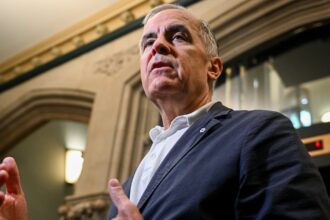The corridors of Quinte Health’s hospitals are witnessing an unexpected demographic shift in their medical staff—American physicians trading their practices south of the border for opportunities in Ontario’s healthcare system. This migration pattern, increasingly evident in 2024, appears to be driven by a complex interplay of political uncertainty, professional autonomy concerns, and quality of life considerations.
“We’ve seen a noticeable uptick in applications from U.S.-trained physicians over the past eight months,” reveals Dr. Colin MacPherson, Chief of Staff at Quinte Health. “Many explicitly mention concerns about the political climate in the United States as a motivating factor for their relocation.”
The timing of this professional exodus coincides with the turbulent American election cycle and growing concerns about potential policy changes under different administrations. For many physicians, Canada’s universal healthcare system, despite its challenges, represents stability in an increasingly unpredictable landscape.
Dr. Jane Philpott, Dean of Health Sciences at Queen’s University and former federal Minister of Health, has observed this trend extending beyond Quinte Health. “Healthcare professionals are seeking environments where they can practice evidence-based medicine without excessive political interference,” she explains. “Canada’s system, while imperfect, offers that balance for many physicians looking to relocate.”
Beyond politics, American doctors cite concrete professional advantages to practicing in Canada. Despite earning approximately 20-30% less than their U.S. counterparts, many find the trade-off worthwhile when considering reduced administrative burdens, lower malpractice insurance costs, and freedom from insurance company protocols that often dictate treatment decisions in the American system.
“I was spending almost 40% of my time on paperwork and insurance negotiations,” shares Dr. Michael Stavros, who recently joined Quinte Health’s team after 12 years practicing in Boston. “Here, I’m practicing medicine again, not just managing bureaucracy.”
The migration represents both opportunity and challenge for Canadian healthcare systems facing their own physician shortages. While Canada’s rural communities have historically struggled to attract and retain doctors, U.S.-trained physicians are helping fill critical gaps in underserved areas.
For communities like those served by Quinte Health, the influx comes as welcome relief. “We’ve been able to reduce wait times in several specialties thanks to our recent international recruits,” notes MacPherson. “Our patients are the ultimate beneficiaries of this professional migration.”
This phenomenon isn’t entirely new—similar migration patterns occurred during previous periods of political uncertainty in the United States. However, current data suggests the scale may be unprecedented, with medical licensing authorities across Canada reporting significant increases in credential verification requests from American physicians.
The integration process isn’t without hurdles. Licensing requirements vary by province, and physicians must navigate a complex credentialing system. Additionally, cultural differences in medical practice and administrative protocols require adaptation periods for even the most experienced doctors.
Meanwhile, economic analysts suggest this talent migration could have longer-term implications for both healthcare systems. Canada benefits from experienced physicians without bearing the costs of their training, while the U.S. loses not only individual doctors but often their families and economic contributions.
As political polarization continues to define American discourse heading toward November’s election, healthcare administrators across Canada are preparing for potentially more applicants. The question that remains is whether this represents a temporary surge or the beginning of a more permanent redistribution of medical talent across North America. What lasting impact might this professional migration have on two healthcare systems already facing significant challenges?


















